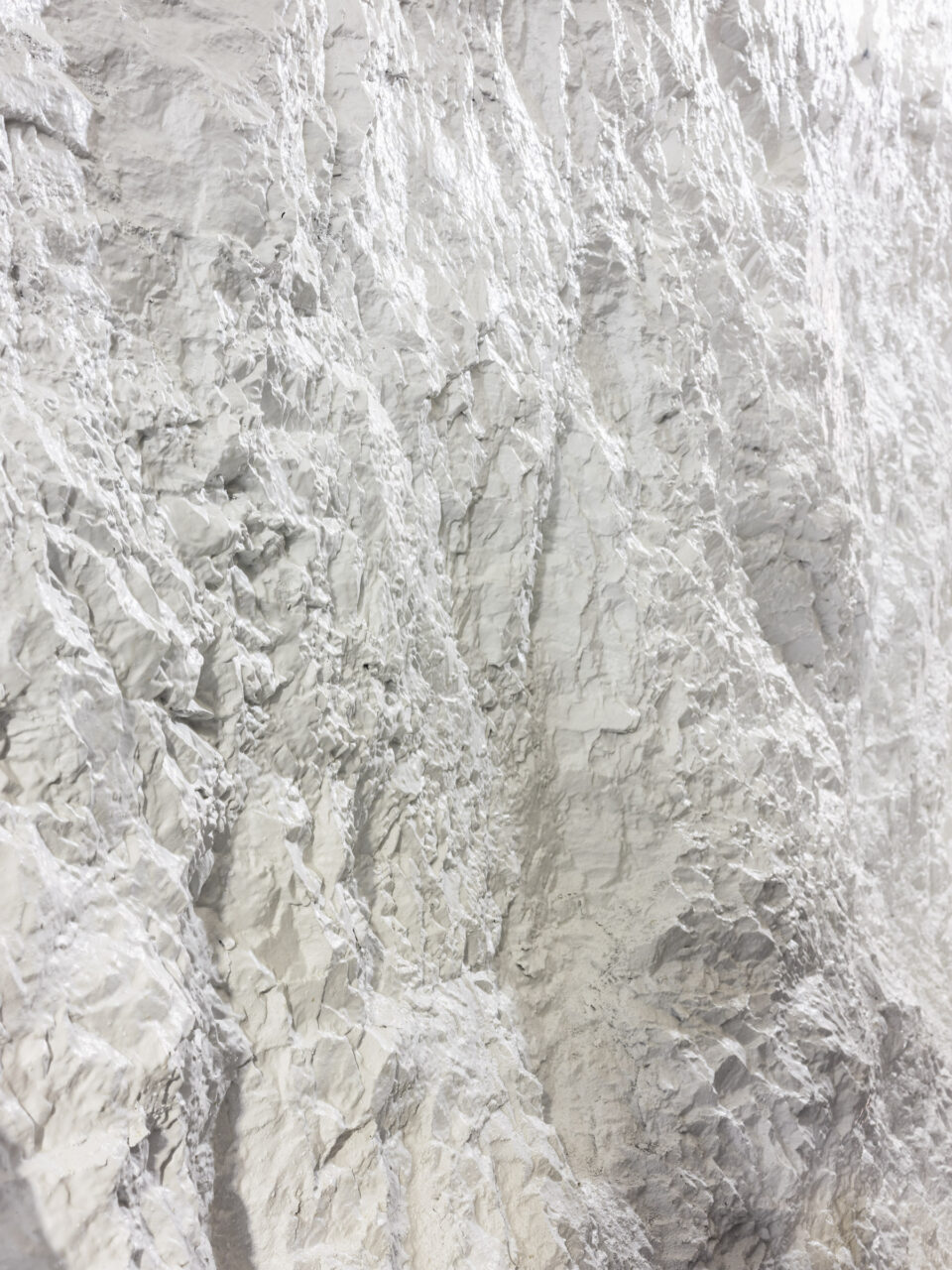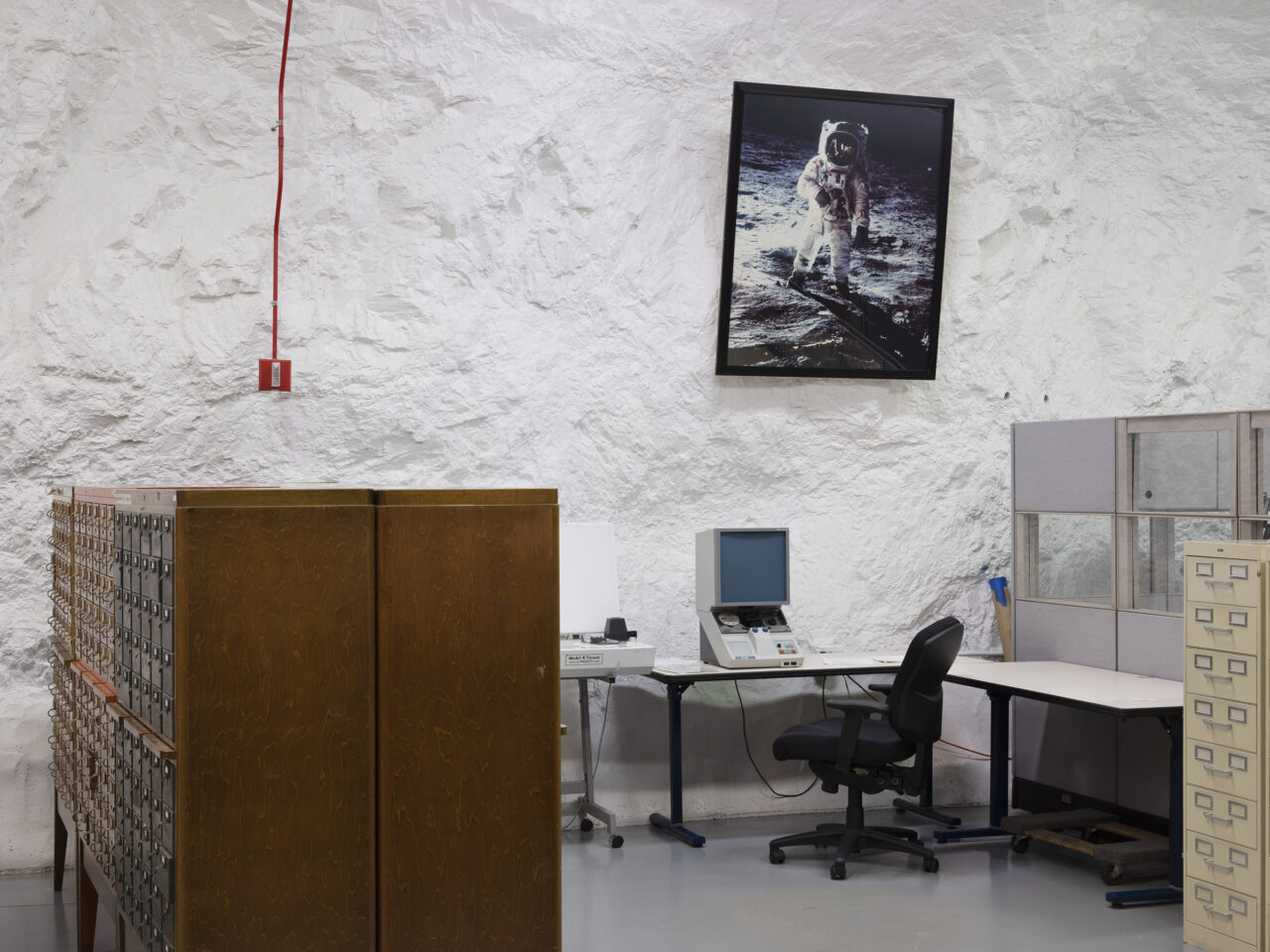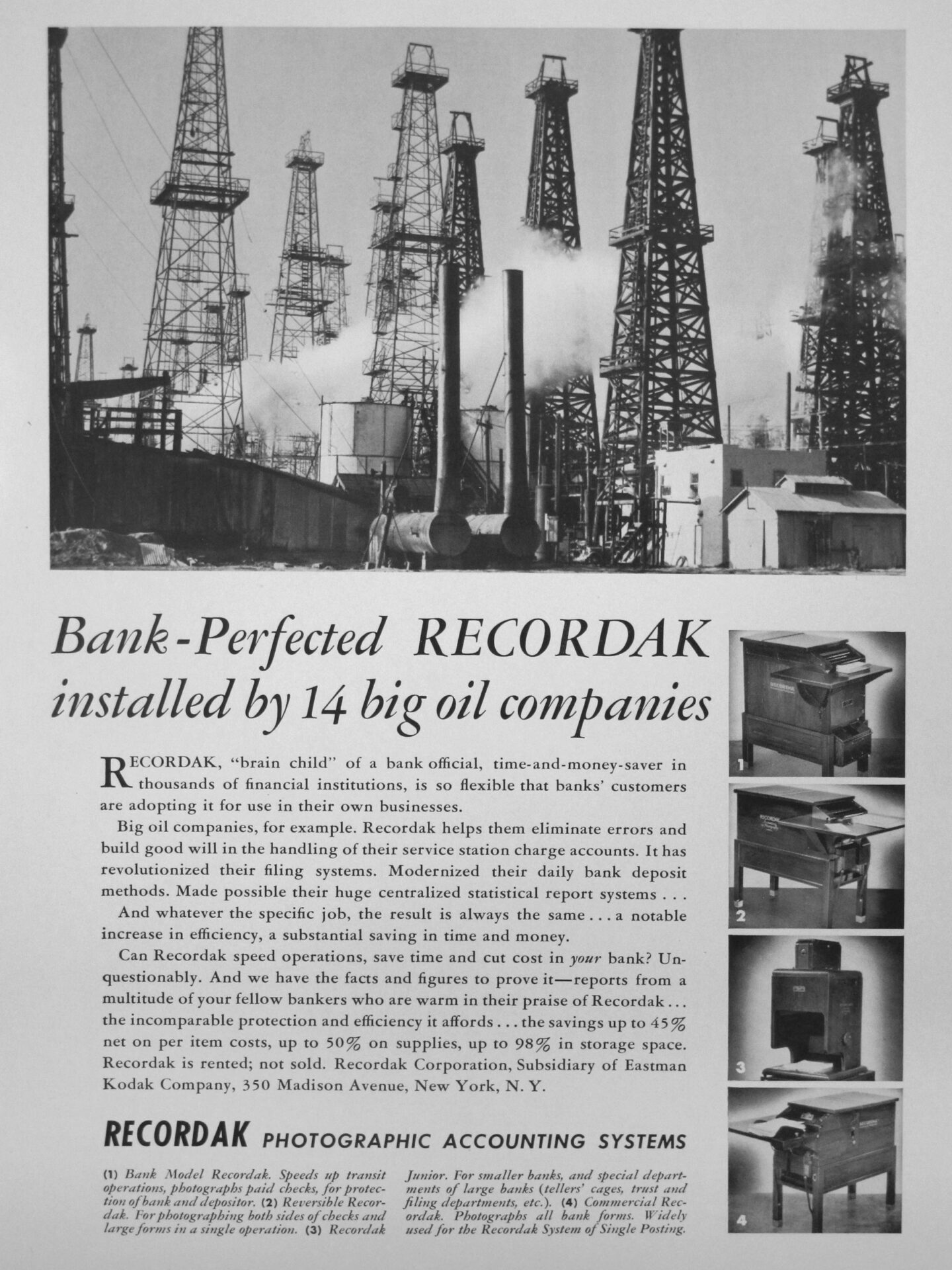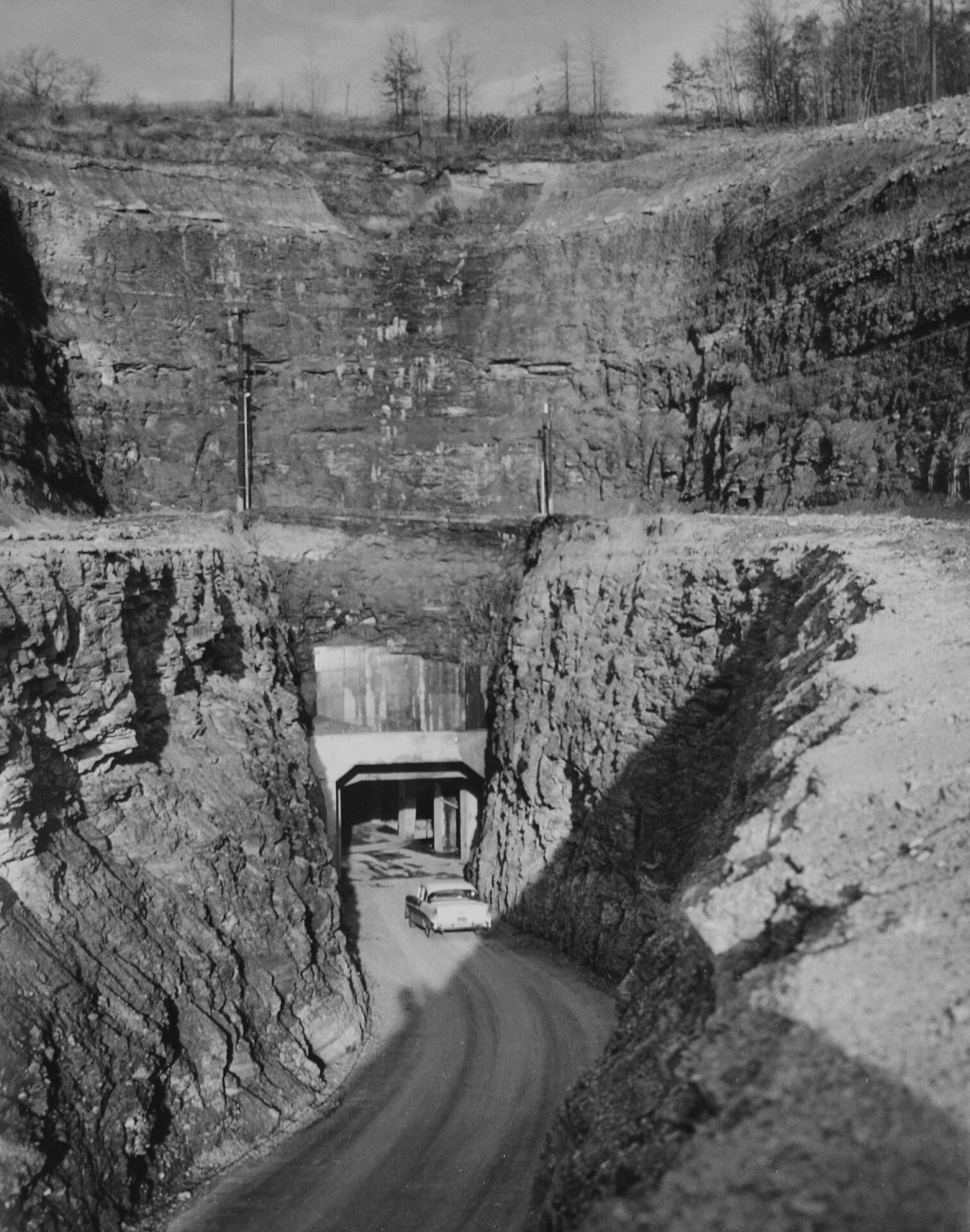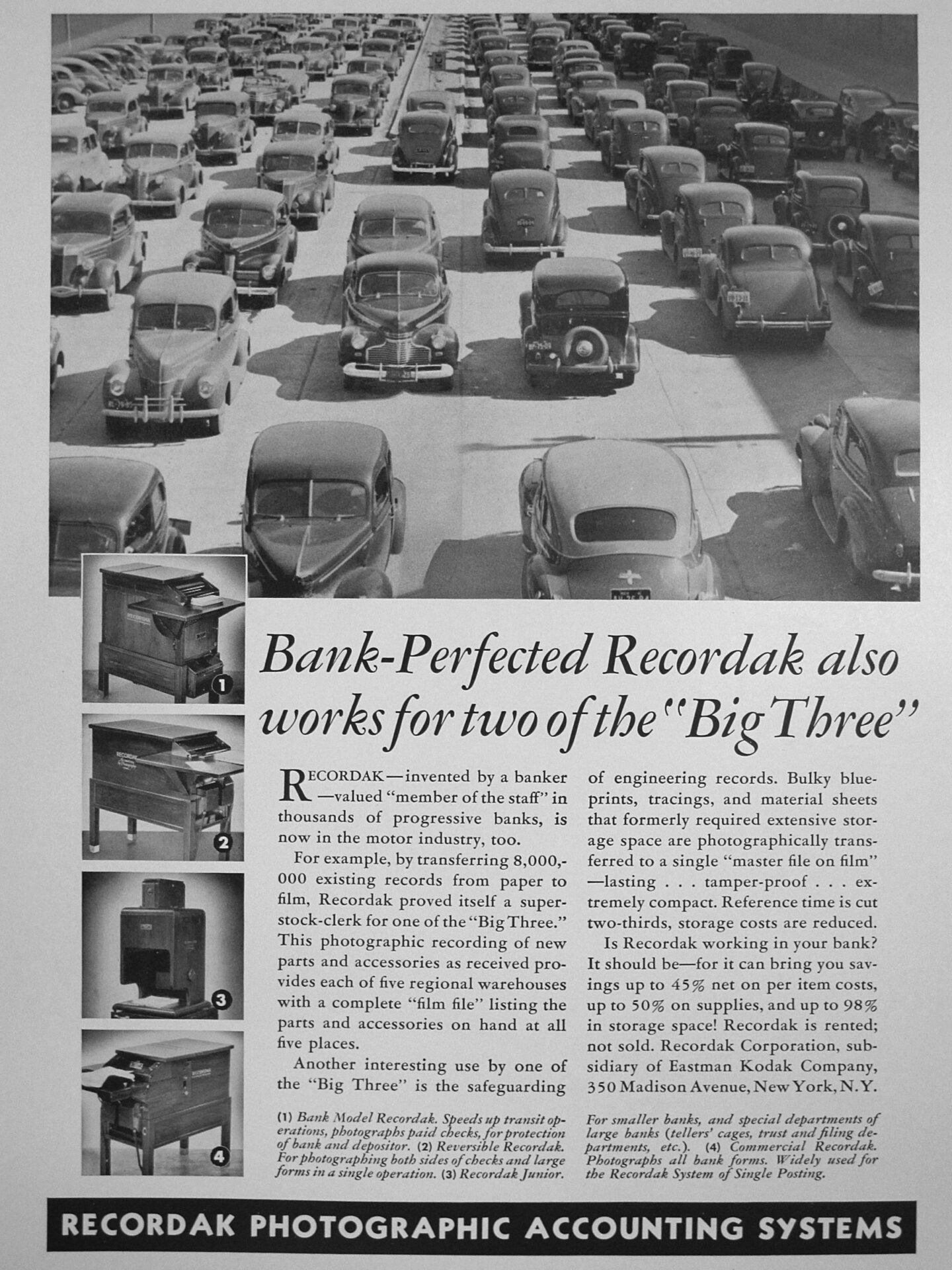TextPROTECTION
Estelle BlaschkeThe form in which the purely reproductive character of photography is most plainly demonstrated is microphotography, meaning the radical compression of text or images on microfilm or microfiche. While the idea of using visual recording instead of manual copying techniques has existed since the invention of photography, it became a scalable practice in the first decades of the twentieth century.
PROTECTION
The form in which the purely reproductive character of photography is most plainly demonstrated is microphotography, meaning the radical compression of text or images on microfilm or microfiche. While the idea of using visual recording instead of manual copying techniques has existed since the invention of photography, it became a scalable practice in the first decades of the twentieth century.
With the massive increase in books, journals, and newspapers, Paul Otlet, a pioneer of modern information science, predicted that books in the future would be published in photographic form. Microfilm promised to reduce storage space and production costs. It provided remote access to more or previously unavailable material. It was promoted as a means to preserve or even replace originals.
The first systematic application of microfilm, however, did not take place in the world of the library but in a very special environment: banking. There, it was used to quickly make and store copies of bank transactions and customer information. The new service facilitating the handling of large amounts of data soon spread to many other types of businesses, such as retail companies, insurance firms, the auto industry, and many government agencies.
As information as such became increasingly valuable, even vital, it required protection. Soon, protecting the wealth and continuous flow of information also meant protecting one’s own company or institution. The response to the potential endangerment of original material through data theft or decay was the creation of backup versions and the long-term protection of original material. In addition, creating a business history and business archives was deemed necessary for the sustainability and expansion of a company’s operations. In the wake of the Cold War, high-security storage facilities emerged throughout the United States and elsewhere precisely for these purposes.
One of these is Iron Mountain, a former limestone mine located in a secluded area in Western Pennsylvania. Today, over 2,500 people work in this subterranean repository. It houses vast collections of photos and celluloid film reels and vital paper documents, including those of the US Patent Office and National Archives. The long-term preservation and maintenance of server parks requires immense energy resources in order to keep the analogue and digital data centers cool. What was once primarily a storage facility that produced photographic copies as backups—through the service company Recordak, a subsidiary of Eastman Kodak—has become a multinational and multi-billion-dollar data management company. However, data management and data protection today mean not only protecting originals from endangerment or material deterioration. In the highly contentious field of copyright, it ensures proof of ownership and usage rights for digital assets that can be traced back to analogue holdings or that are logged in archives and databases.
Die Form, in der sich der rein reproduktive Charakter der Fotografie am deutlichsten zeigt, ist die Mikrofotografie, d. h. die radikale Komprimierung von Text oder Bildern auf Mikrofilm oder Mikrofiche. Die Idee, visuelle Aufzeichnungen anstelle manueller Kopiertechniken zu verwenden, tauchte bereits in den frühen Jahren der Fotografie auf, wurde aber erst in den ersten Jahrzehnten des 20. Jahrhunderts zu einer angewandten Praxis. Angesichts der massenhaften Veröffentlichung von Büchern, Zeitschriften und Zeitungen prophezeite Paul Otlet, ein Pionier der modernen Informationswissenschaft, dass Bücher in Zukunft nicht auf Papier, sondern in fotografischer Form erscheinen würden. Der Mikrofilm versprach, den Lagerplatz und die Produktionskosten zu reduzieren und den Fernzugriff auf mehr oder zuvor nicht verfügbares Material zu ermöglichen. Er wurde als Mittel zur Bewahrung oder sogar zum Ersatz von Originalen beworben.
Die erste systematische Anwendung des Mikrofilms fand jedoch nicht in der Welt der Bibliotheken statt, sondern in einem ganz besonderen Umfeld: im Bankwesen. Dort diente er zur schnellen Herstellung und Speicherung von Transaktionen und Kundeninformationen. Die neue Dienstleistung, welche den Umgang mit großen Datenmengen erleichterte, verbreitete sich bald auch in vielen anderen Branchen wie etwa im Einzelhandel, im Versicherungswesen, in der Autoindustrie und in staatlichen Behörden.
Da die Informationen als solche immer wertvoller, ja sogar systemrelevant wurden, mussten sie langfristig gesichert werden. Bald bedeutete der Schutz des Datenbestandes und des stetigen Flusses von Informationen auch die Sicherung des Fortbestands des eigenen Unternehmens oder der Institution. Die Antwort auf die potenzielle Gefährdung durch Datendiebstahl oder -verfall war die Erstellung von Backup-Versionen und der langfristige Schutz des Originalmaterials. Darüber hinaus wurde der Aufbau eines Unternehmensarchivs als notwendig erachtet, um die Erweiterung der Geschäftstätigkeit eines Unternehmens zu gewährleisten. Als Folge entstanden in den Vereinigten Staaten und andernorts während des Kalten Krieges Hochsicherheitsdepots für eben diese Zwecke.
Eines davon ist Iron Mountain, eine ehemalige Kalksteinmine in einer abgelegenen Gegend im Westen Pennsylvanias. Heute arbeiten in dem Unternehmen gleichen Namens über 2.500 Menschen. Das unterirdische Lager beherbergt riesige Sammlungen von Fotografien und Zelluloidfilmrollen sowie wichtige Originaldokumente, darunter die des US-Patentamts und des Nationalarchivs. Die langfristige Erhaltung und Wartung der Archivräume und Serverparks erfordern immense Energieressourcen, um die analogen und digitalen Datensammlungen zu kühlen. Das ehemalige Depot, welches über das Dienstleistungsunternehmen Recordak, eine Tochtergesellschaft von Eastman Kodak, Sicherheitskopien herstellte, hat sich zu einem internationalen und milliardenschweren Datenmanagementunternehmen entwickelt. Datenmanagement und Datenschutz bedeuten heute aber nicht nur, Originalmaterial vor dem Verfall zu schützen. In der dynamischen Debatte über das Urheberrecht geht es nicht zuletzt um den Nachweis von Eigentums- und Nutzungsrechten an digitalen Beständen, die sich auf analoge Bestände zurückführen lassen oder in Archiven und Datenbanken erfasst sind.
La forma in cui si manifesta più chiaramente il carattere della fotografia come mezzo di riproduzione è la microfotografia, ovvero la radicale compressione di testi o immagini su microfilm o microfiche. Se l’idea di sostituire delle tecniche di copia manuale con delle registrazioni visive risale all’invenzione della fotografia, bisogna attendere i primi decenni del XX secolo perché questa pratica si diffonda su larga scala. Con il massiccio aumento della produzione di libri, riviste e giornali, Paul Otlet, pioniere della moderna scienza dell’informazione, preannunciò che in futuro i libri sarebbero stati pubblicati in forma fotografica. Il microfilm, che prometteva di ridurre gli spazi di archiviazione e i costi di produzione e garantiva l’accesso da remoto a quantità ingenti di materiali precedentemente non disponibili, fu allora promosso come mezzo per preservare o addirittura sostituire gli originali.
La prima applicazione sistematica del microfilm, tuttavia, non avvenne nel settore bibliotecario, ma in un ambito decisamente insolito: le banche. Qui fu utilizzato per produrre e archiviare copie di transazioni e informazioni relative ai clienti. Il nuovo servizio, che facilitava la gestione di grandi quantità di dati, si diffuse ben presto ad altri ambiti commerciali, come le società di vendita al dettaglio, le assicurazioni, l’industria automobilistica e molti enti governativi.
Le mere informazioni acquisirono nel tempo sempre più valore, fino a diventare cruciali, e cominciarono a necessitare di protezione. Ben presto proteggere un ricco e inarrestabile flusso di informazioni significò anche proteggere una singola azienda o istituzione. La creazione di versioni di back-up e sistemi di protezione a lungo termine fu la risposta al rischio di perdita di materiale originale a causa di un furto di dati o del suo danneggiamento. Inoltre, per il mantenimento e l’espansione delle attività di una società, si resero necessarie la costruzione di una storia aziendale e l’istituzione di un archivio. Sulla scia della Guerra Fredda, negli Stati Uniti e in molti paesi proliferarono sistemi di archiviazione di massima sicurezza destinati esattamente a questi scopi.
Uno di questi luoghi è Iron Mountain, una cava di calcare esausta situata in una zona remota della Pennsylvania occidentale. Questo deposito sotterraneo, in cui oggi lavorano oltre 2500 persone, ospita vaste raccolte di fotografie, rulli di pellicola in celluloide e documenti cartacei di importanza cruciale, tra cui quelli dell’Ufficio Brevetti e degli Archivi Nazionali degli Stati Uniti. La conservazione e la manutenzione dei parchi server richiedono risorse energetiche enormi che servono a raffreddare i centri di elaborazione dei dati analogici e digitali. Quello che un tempo era principalmente un sito di stoccaggio che produceva duplicati fotografici di riserva – attraverso la società di servizi Recordak, sussidiaria di Eastman Kodak – è diventato un’azienda multinazionale e multimiliardaria di gestione dei dati. Tuttavia le attività di gestione e protezione dei dati oggi non si esplicitano solo nel preservare gli originali dal deterioramento materiale. Nel settore estremamente problematico del copyright, i negativi originali attestano i diritti di proprietà e di utilizzo di beni digitali che possono essere tracciati fino ad arrivare alle fonti analogiche o che sono registrati in archivi e database.
